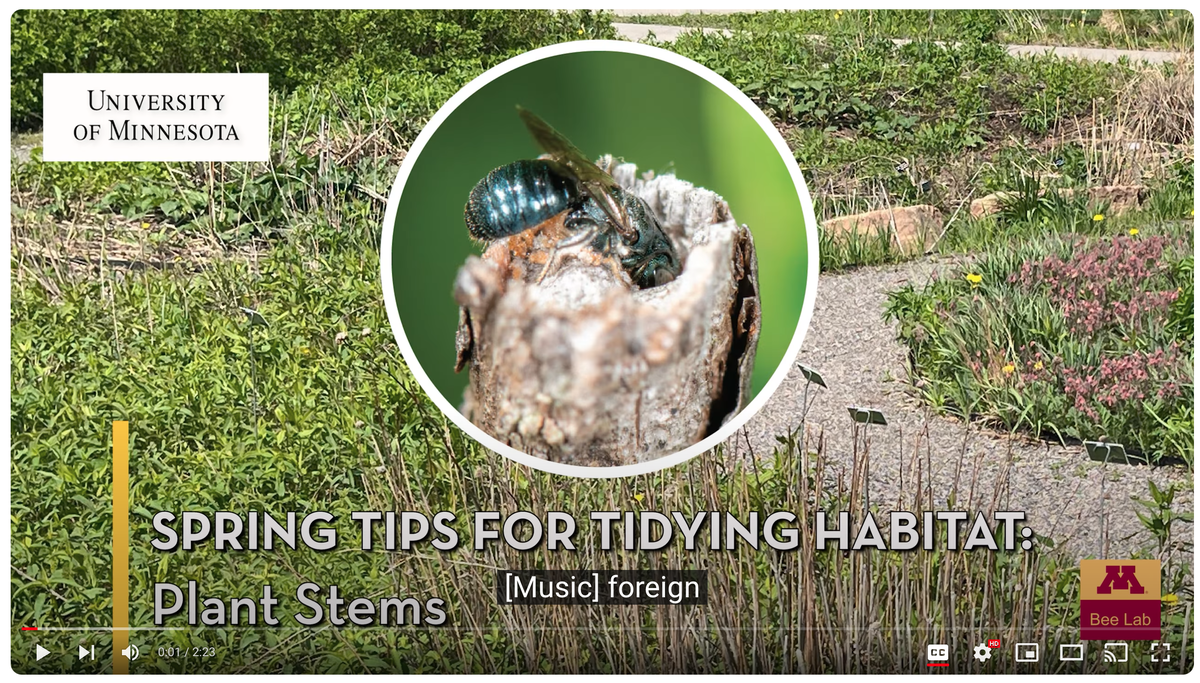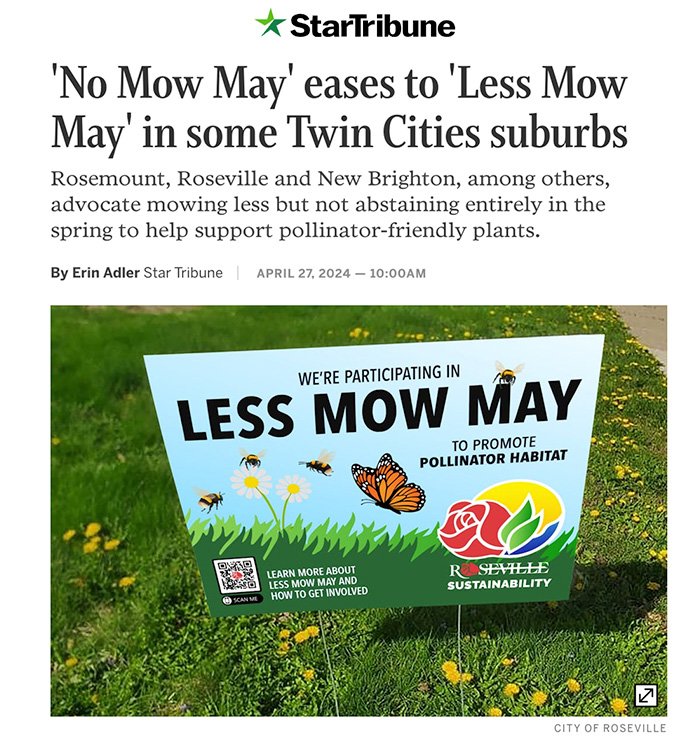Slow Mow Summer
And Why No Mow May No Longer Makes the Cut
While “No Mow May” is a catchy slogan, we need to modify it to “Slow Mow Summer,” because mowing less--rather than not at all--is the goal of this bee-friendly campaign.
In May, many bees come out of hibernation and need flowers to feed themselves and their babies. The sentiment behind “No Mow May” was to encourage people to let spring flowers bloom in their lawns before mowing, including dandelions, white clover, and creeping charlie that are sometimes perceived as weeds but provide important food for pollinators.
“Slow Mow Summer” takes the sentiment of “No Mow May” and expands it to the entire growing season! Because guess what? Bees need food AFTER May, too. Many bee species do not even emerge from hibernation until June or July, when self-heal, ground plum, lanceleaf tickweed or calico American aster may be blooming in your lawn.
If your lawn doesn’t have blooming flowers, add some of the flowers highlighted above so you can participate in “Slow Mow Summer.” Native plants like violets and pussy toes can be added too. Plant diversity is key to supporting bee diversity, so if you can, plant a wide variety of native spring blooming flowers, trees, and shrubs, like pussy willows, serviceberries, and bluebells.
Although it can be tempting to clean up your yard in spring, hibernating pollinators often need a bit more time under the leaves before they can safely emerge. So go slow this season and leave leaves on the ground to continue providing important insulation for hibernating bees, moths and butterflies still overwintering. When you notice lots of blooming trees and flowers with active bees, it should be safe to remove winter’s leaves.
Bees that nest in stems may not emerge until mid-June or later. It is best to leave the stems where they are. New growth will soon cover them, and any bees nesting in the stems will emerge before those old old stems decompose.
If you want to remove past seasons' stems from your garden before mid-June, find a place to safely stash the cut stems until the bees that might be nesting in them have a chance to emerge. Come midsummer, you can safely compost these stems. When you do cut stems back, leave about 12 inches of stem standing to create nesting habitat for this summer's bees.
FAQ
Can we thatch our lawn before May?
It depends on why you are deciding to not mow in May. If it is to let flowers bloom in your lawn, then it is probably better to get rid of the thatch so any flowering plants in your lawn have more room to grow. That thatch could be making nesting habitat for some bees, but you would need to leave it there longer than May to make a difference for those bees. If you have an out of the way corner in your yard where you can make a pile of thatch, that could make great habitat for some bees.
Will mowing in May harm overwintering rusty patched bumblebees?
Not likely. Rusty patched queens dig themselves down into the soil several inches to overwinter and are most likely to do that in places that are more protected than your typical lawn. If a rusty patched queen does happen to dig a hole to overwinter in someone's lawn they would be about 2 inches underground and not likely to be impacted by mowing. There are other bees, such as miner bees, that do overwinter and even make nests in lawns. They are underground and are not affected by mowing, even when their nests are active. These are extremely gentle bees that don't sting even when you are messing with their nests.
Won't not mowing in May just encourage invasive weeds to spread?
People should not take the catch phrase "No Mow May" literally. The basic idea of No Mow May is to increase the availability of flowers. For example, if you give dandelions a chance to flower, but mow before they go to seed, you can provide resources for pollinators and not increase their spread. Mowing to prevent seed spread may need to happen during May. For white clover, you may need to mow in May to encourage them to flower again if the flowers are going to seed. Encouraging native plants that flower in lawns is a great solution to the problem of invasive weeds in lawns. Some people may still consider these plants to be "weeds" but they are simply flowers that grow where grass used to grow.



